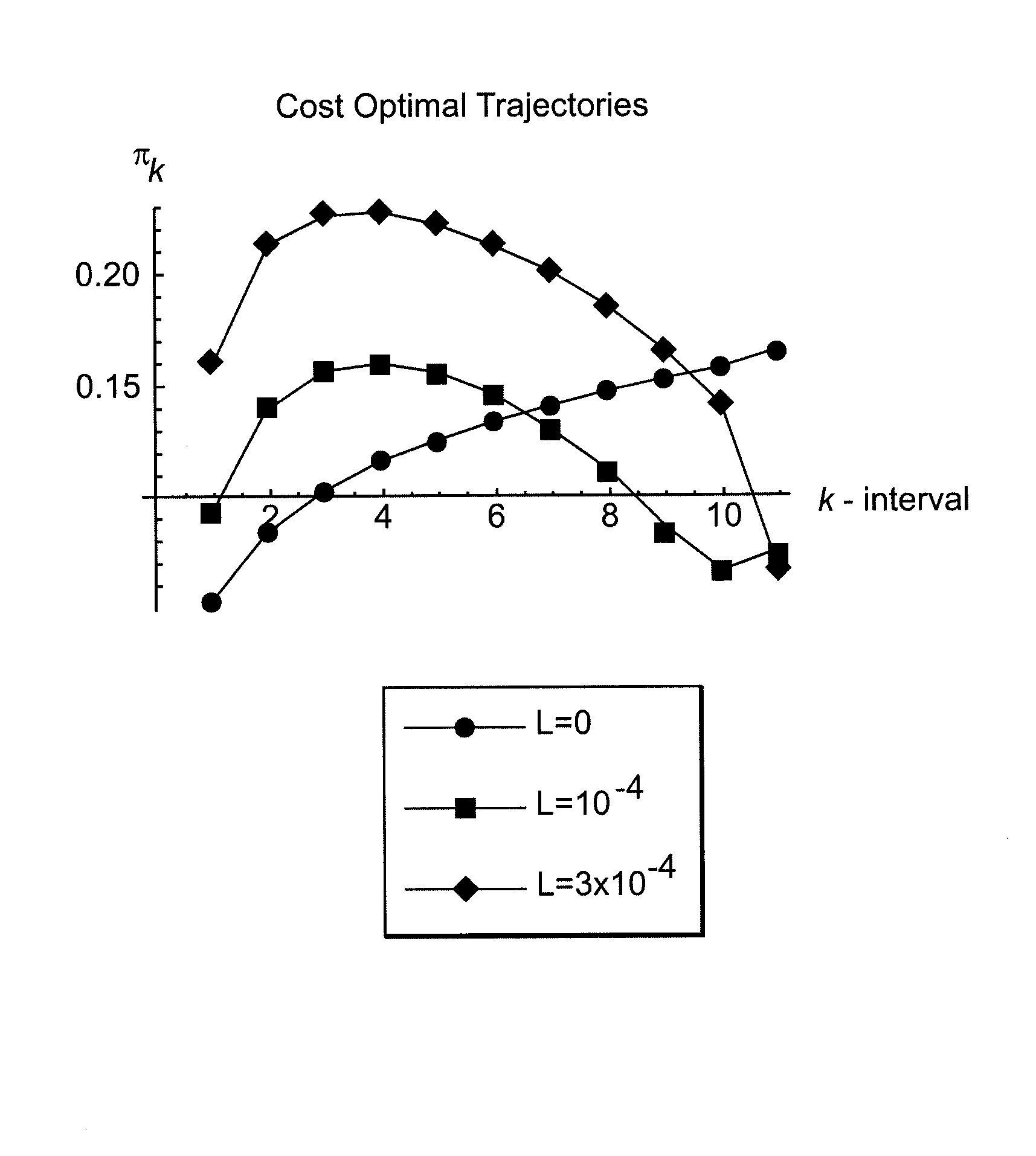Methods and systems related to securities trading
a technology of methods and systems, applied in the field of methods and systems related to securities trading, can solve the problems of shortfall (is) performance, lacked sophistication of historical tca offerings, and largely limited
- Summary
- Abstract
- Description
- Claims
- Application Information
AI Technical Summary
Benefits of technology
Problems solved by technology
Method used
Image
Examples
examples
[0360
[0361]Let
[0362]f(πi{πj}j=1i-1)=∑m=1nam({πj,ξj}j=1i-1)πiγm∑m❘γm≠0nam,n∈,γm∈≥0⋀∑m❘γm≠0nam≠0.(G)
[0363]1
[0364]The functions am=am({πj,ξj}j=1i−1) and coefficients γm could be partially determined by (H. 2), ∫01p(π,i=N*(X))dπ→p(i=N*)
[0365]∝1iα+1,
when πj=constant, ∀j. It can be shown that if am are constants for all m, then am and γm are arbitrary.
[0366]If one takes f(πi)=πi then,
[0367]p(πi,i≤[N*] / π1,π2,…,πi-1)=(πi-1βξi-1α-2ξi-2)(πiβξiα-1),i>2.
[0368]Also, because ∫01p(π1,1≦[N*])dπ1p(1≦[N*])=C, where C is a normalization constant; then, one may choose p(π1,1≦[N*])=C. Let be p(π2,2≦[N*] / π1)=π2−βξ2−α+1. Using (H. 2),
[0369]p(π1,π2,…,πi,i≤[N*])=Cπ1-1πiβξiα-1ξi-1.(H)
[0370]For constant participation rate, (H) becomes:
[0371]p(π,i≤[N*])=Cπα-β-1iα-1(i-1),i>1.(I)
[0372]Additionally,
[0373]p(i≤[N*])=∫01p(π,i≤[N*])ⅆπ=ciα-1(i-1),i>1.
[0374]C(k-1)kα-1=p([N*]≥k)=def∑i=0∞pk+i,k>1.(J)
[0375]Subtracting p([N*]≧k+1) from p([N*]≧k), one obtains:
[0376]pk=C[1(k-...
PUM
 Login to View More
Login to View More Abstract
Description
Claims
Application Information
 Login to View More
Login to View More - R&D
- Intellectual Property
- Life Sciences
- Materials
- Tech Scout
- Unparalleled Data Quality
- Higher Quality Content
- 60% Fewer Hallucinations
Browse by: Latest US Patents, China's latest patents, Technical Efficacy Thesaurus, Application Domain, Technology Topic, Popular Technical Reports.
© 2025 PatSnap. All rights reserved.Legal|Privacy policy|Modern Slavery Act Transparency Statement|Sitemap|About US| Contact US: help@patsnap.com



